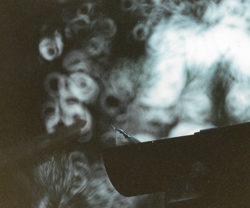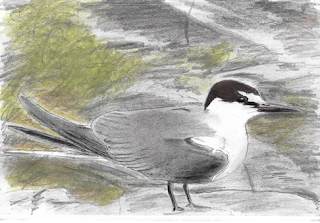Red-breasted Nuthatch – Holkham National Nature Reserve, Holkham, Norfolk, 22nd
October 1989
The news had momentous repercussions. Almost instantaneously a very significant proportion of the birders in the Scillies made plans to leave to twitch this amazing bird!
In doing so, I was robbed of what was potentially going to be the pinnacle of my footballing career; a few days before I had played in the North v. South birders football match which was played in order to select a Birders team to play in the fabled Islanders v. Birders football match. Following my sublime midfield performance (reference needed 😉) I had been selected to play in the Islanders v. Birders game. But this was called off once it was realised most of the Birders team had left Scilly..... .
Pete and I resisted the temptation to leave, and so it was eight days later before we got there, having finally left the Scillies on Wednesday the 18th October. On Sunday the 22nd October Pete and I travelled from St. Albans to Holkham, and the famous pine belt on the sand-dunes, Holkham Pines.
We, and several dozen others. We endured several hours tramping backwards and forwards in the dune ridges, through the pines moving from one place to another place following reported sightings of the bird. So did everyone else. What a way to treat a national nature reserve!!! Thankfully though, we had avoided the horrors of the mass twitch on Sunday the 15th October, when apparently there were hundreds of birders and fist fights broke out.....!
Eventually, eventually I got brief views in the scrum at it made its way along a branch of one of the pines – but being difficult to locate as it was in view only for some and was several trees away. Not the least of my problems was the melee. Anyway, I saw it. It was a tiny nuthatch with a stonking black eye-stripe and crown separated by a huge white supercilium. Otherwise it had pale orangey-buff under-parts and light blue-grey upper-parts.
Some 4.5 months later, on Sunday the 4th March, Pete and I were able to obtain significantly better views at the Queens Summer House. By now it had been pinned down better in terms of its routine as it had been discovered that it regularly came in to drink from the gutter of the summerhouse. So it was that I was set up with my ‘scope in order to take advantage of this.
And so it did. And so I did. Exceptional views of an exceptional bird. One of the very best birds on my UK list.













